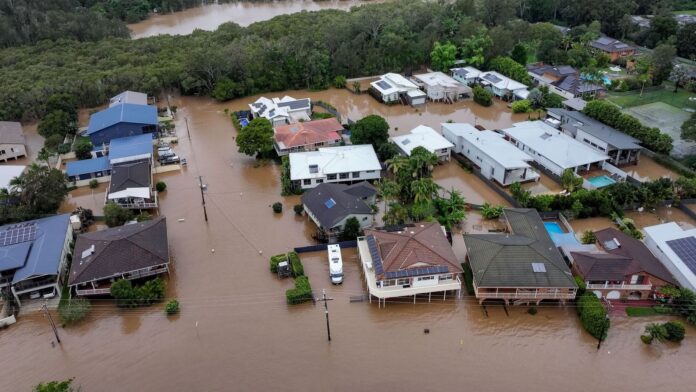Severe flooding has engulfed large parts of eastern Australia, resulting in the deaths of at least four people and leaving more than 50,000 residents cut off in the state of New South Wales. Triggered by an unusually slow-moving low-pressure system, the relentless rainfall has caused rivers to breach their banks, infrastructure to collapse, and entire communities to become inaccessible.
The Mid North Coast and Hunter Valley regions have been particularly devastated, with the town of Taree recording its highest river levels in over a century. Hundreds of homes have been inundated, and key roadways have become impassable. Emergency services have responded to more than 670 calls for rescue, including several rooftop evacuations in areas where water levels rose rapidly overnight.
Among the confirmed fatalities is a man in his 70s found inside a submerged vehicle near Coffs Harbour. In another incident, a woman in her 60s was swept away while attempting to drive through floodwaters in Brooklana. Authorities have also launched a large-scale search for a 49-year-old man who remains missing in the Nymboida area.
Prime Minister Anthony Albanese and New South Wales Premier Chris Minns have toured some of the worst-hit locations, acknowledging the scale of destruction and the strain on emergency resources. Officials have stressed the urgent need for enhanced flood mitigation systems and more resilient infrastructure to withstand increasingly frequent climate-related disasters.
As the Warragamba Dam approaches capacity, authorities warn that additional releases may intensify flooding in downstream communities. With rain forecast to continue moving southward, residents are being urged to remain alert and prepare for further disruptions. The Insurance Council of Australia has classified the event as significant, anticipating substantial financial losses as damage assessments continue.
This latest disaster highlights the vulnerability of modern infrastructure to natural forces and raises critical questions about the preparedness of authorities and the long-term sustainability of urban development in flood-prone regions.

